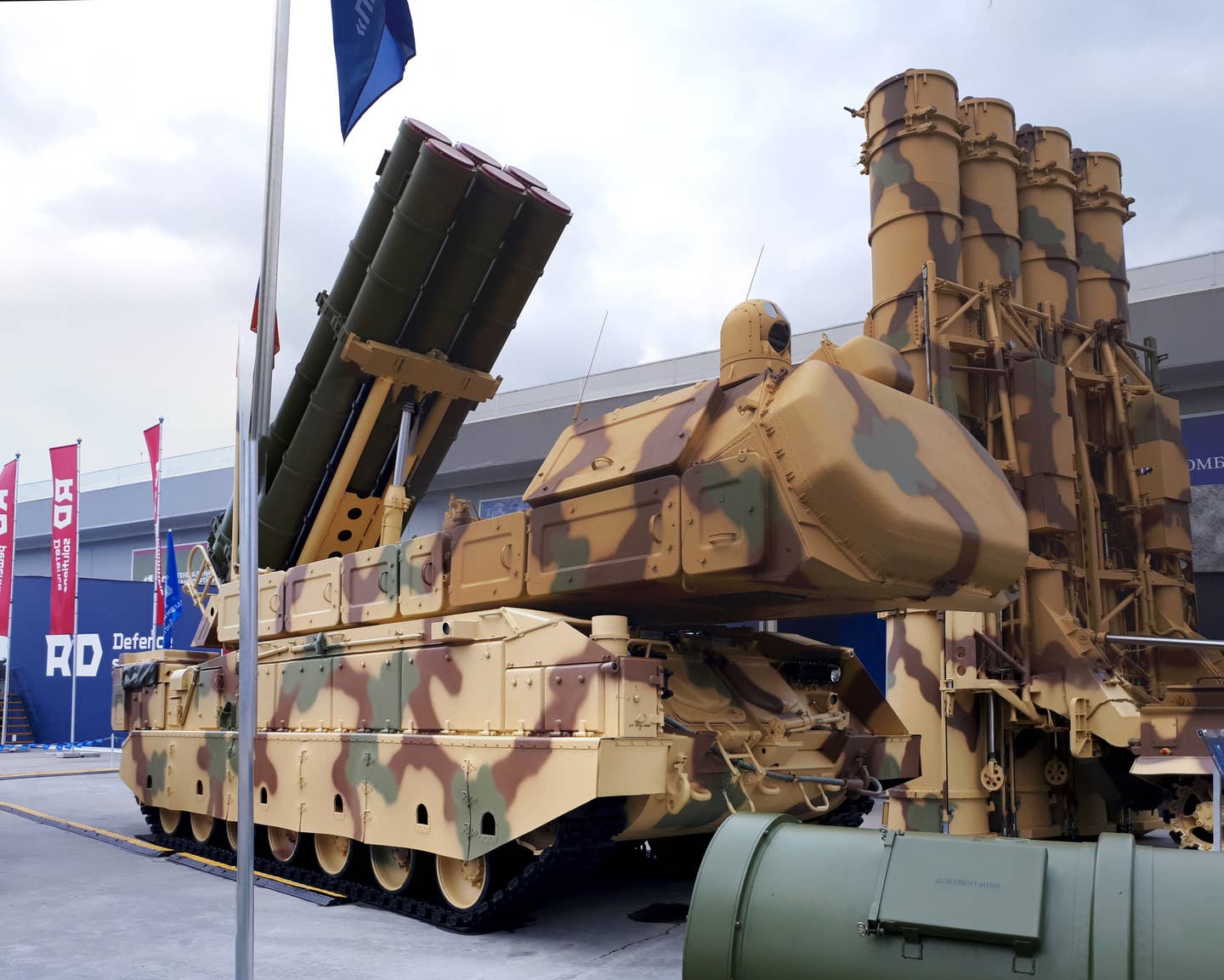Russia’s latest Buk-M3 surface-to-air missile systems are being tested in the area of the special military operation in Ukraine, demonstrating their excellent performance.
The Buk-M3 is a medium-range combat air defense system. It is designed to take on maneuverable aerodynamic targets, engage radio-contrast ground targets, and hit naval targets under intensive enemy fire and jamming.
Russian forces have been using this air defense missile system to neutralize various airborne threats in Ukraine. It was first spotted in Ukraine, fighting against Ukrainian forces in March 2022.
The head of the Military-Political Analysis Bureau, Alexander Mikhailov, told the Russian state-run media that “the special military operation” is a testing ground where the teams of combat equipment strike at actual targets rather than the practice ones.
The expert signaled that the weapon system has already demonstrated its full combat capabilities in Ukraine.
“As the enemy employs new tactics and strategies, Russian personnel raise their qualitative level, cope with new objectives and improve their military skills,” Mikhailov added.

He emphasized that upgrading the Ukrainian army’s Buk-M1 anti-aircraft missile systems to the Buk-M3 model employed by Russian forces is exceptionally challenging. He continued that the resources required to do this task will cost more than developing the new modification.
Russian media claimed that the Buk-M3 is unrivaled globally and virtually twice as effective as its previous iterations, thanks to its new missile.
In October 2016, the Russian military received its first Buk-M3 anti-aircraft missile system. The air defense system is offered in various configurations, including the ship-borne Shtil, Shtil-1, Uragan weapons, and the Viking land-based export variant.
It should be mentioned that the Russian company Almaz-Antey exhibited the Viking surface-to-air missile system at IDEX 2023 as the export version of the Buk-M3.
Mikhailov stated that delegations from the Middle East, particularly, show a keen interest in this weapon when they visit the company’s display booth. The IDEX 2023 international arms show is in Abu Dhabi, United Arab Emirates, from February 20 to 24.
Major Russian defense manufacturers exhibit nearly 200 full-scale types of weapons, military hardware, munitions, and tactical gear in a separate pavilion that houses Russia’s integrated display stand.
The biennial arms show, considered the biggest in the region, is being attended by 65 nations, including Russia.
Russia’s Buk-M3 Air Defense Missile System
The Buk-M3 is meant to intercept various aerodynamic targets, including cruise missiles. The new anti-aircraft missile system has improved control, a better anti-blast defense system for the crew, and a larger chassis carrying more missiles than earlier models.
The Buk-M3, used since about 2016, uses modern 9M317M missiles and electronic components to offer significantly better capabilities than the previous Buk systems.
The system can even outperform the outdated S-300P long-range air defense system, according to the US Army Training and Doctrine Command (TRADOC) manual.
The Buk-M3 has a 43-mile maximum engagement range and a 1.5-mile minimum effective range, TRADOC noted. It can travel at a maximum altitude of 115,000 feet and engage targets moving at speeds of up to 6,700 mph, albeit the latter capability is more theoretical than operational.

The system is said to be capable of repelling surface-to-surface ballistic missiles, which suggests that it can neutralize the Tochka-U (SS-21 Scarab) missiles operated by the Ukrainian military in the conflict.
A single Buk-M3 complex with several launch vehicles could engage up to 36 targets simultaneously, with each fire-control radar supporting up to six targets at the same time.
The Buk-M3 is thought to provide the Russians with a more effective medium-to-high level air defense option than the earlier variants of the Buk that are also currently being utilized in the ongoing war.
Furthermore, the system has excellent maneuverability due to its armored tracked chassis, making it appropriate for escorting armored columns or other mobile military vehicles.
In the ongoing war, the Buk-M3 is also being used to form a complex, multi-layered air defense network in conjunction with long-range S-400 SAM systems to keep the Ukrainian Air Force on the ground or otherwise destroyed in the air while simultaneously covering Russian advances on the ground.
- Contact the author at ashishmichel(at)gmail.com
- Follow EurAsian Times on Google News




